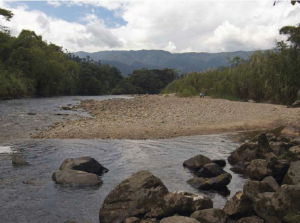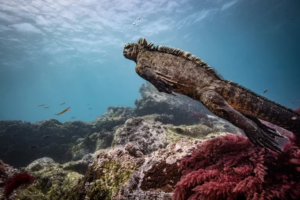Unveiling the Ecological Marvels
Yasuní National Park stands as a testament to an era long past, with its roots extending to the end of the Pleistocene, some 22 to 13 thousand years ago. During this icy period, only a handful of resilient vegetation islands dotted the frozen landscape, eventually shrinking with the passage of time. In this unique environment, wildlife flourished, adapting to an abundance of food sources. The result? A myriad of species thriving in this remarkable haven.
The Majestic Rivers and Diverse Topography
Situated between the Napo and Curaraylo rivers, Yasuní National Park boasts a complex network of waterways. These include the Tivacuno, Tiputini, Nashiño, Cononaco, and Tigüino rivers, which form the lower Napo basin. Encompassing over a million hectares of tropical forests, the park’s topography varies from wide plains with small hills in the central and western parts to extensive swamps near the border with Peru.

Sistema Nacional de Áreas Protegidas (2011)
A Haven for Biodiversity
Renowned globally for its unparalleled diversity, Yasuní National Park is home to approximately 567 bird species, 173 mammal species (comprising 43% of Ecuador’s mammal species), 13 primate species, 105 amphibian species, 83 reptile species, and over 100,000 insect species per hectare. These include the three argest and most hunted primates, monkeys woolly monkeys (chorongos), spider monkeys (maquisapas) and howler monkeys (cotos). Astonishingly, the park protects 40% of all Amazon basin mammal species and 90% of Ecuadorian Amazon mammal species.
A Glimpse into Yasuní’s Fauna
The park’s animal life showcases remarkable adaptations to arboreal living across various groups, including mammals, birds, reptiles, and amphibians. Prehensile tails in primates stand as a prime example of this adaptation to life in the trees.
Threats to Yasuní’s Natural Resources
A comprehensive study by USAID in 2005 identified the primary threats to Yasuní National Park’s natural resources, including deforestation, unsustainable agricultural practices, and inadequate natural resource management. These factors contribute to soil and water degradation and negatively impact the delicate Amazonian ecosystem.
Cultural Significance and Indigenous Communities
Yasuní is not just a haven for wildlife but also a home to three major indigenous communities: the Waorani, Kichwa, and Shuar. Additionally, it houses Ecuador’s last remaining peoples in voluntary isolation—the brave warriors, Tagaeri and Taromenani. The park serves as a vital cultural and ecological hub.
Sustainable Practices and Oil Reserves
The area plays a significant role in coffee production, followed by crops like corn, plantain, cocoa, and rice. Coffee and cocoa cater to agroindustry and exports, while corn and rice serve local consumption. Notably, the Ishpingo Tambococha-Tiputini (ITT) field within the park holds 18.3% of Ecuador’s proven oil reserves. The state closely monitors oil exploitation to minimise environmental impacts.
Planning Your Visit
Yasuní National Park welcomes visitors with a warm, humid climate, experiencing heavy rainfall from April to July and reduced rainfall from December to February. Tourist activities currently concentrate outside the park, and entry is recommended from the city of Coca. Vaccination against yellow fever is advisable. Access the park by navigating the Napo River from Coca, and explore its interior through routes like the Indillama River, Tiputini River, and the Yasuni River, treating yourself to the incredible flora and fauna along the way. Embark on a journey to Yasuní and witness the unparalleled wonders of this ecological treasure.




